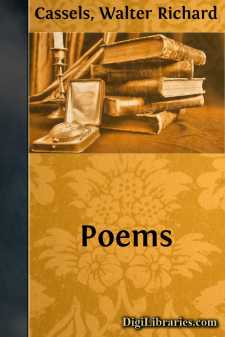Categories
- Antiques & Collectibles 13
- Architecture 36
- Art 48
- Bibles 22
- Biography & Autobiography 813
- Body, Mind & Spirit 142
- Business & Economics 28
- Children's Books 15
- Children's Fiction 12
- Computers 4
- Cooking 94
- Crafts & Hobbies 4
- Drama 346
- Education 46
- Family & Relationships 57
- Fiction 11828
- Games 19
- Gardening 17
- Health & Fitness 34
- History 1377
- House & Home 1
- Humor 147
- Juvenile Fiction 1873
- Juvenile Nonfiction 202
- Language Arts & Disciplines 88
- Law 16
- Literary Collections 686
- Literary Criticism 179
- Mathematics 13
- Medical 41
- Music 40
- Nature 179
- Non-Classifiable 1768
- Performing Arts 7
- Periodicals 1453
- Philosophy 64
- Photography 2
- Poetry 896
- Political Science 203
- Psychology 42
- Reference 154
- Religion 513
- Science 126
- Self-Help 84
- Social Science 81
- Sports & Recreation 34
- Study Aids 3
- Technology & Engineering 59
- Transportation 23
- Travel 463
- True Crime 29
Walter Richard Cassels
Walter Richard Cassels was a 19th-century English writer best known for his anonymously published work "Supernatural Religion." This three-volume critique, first published in 1874, challenged the authenticity of the miracles described in the New Testament, sparking significant controversy among theologians and scholars. Cassels was eventually identified as the author, but he maintained a private life, not engaging much in the public debates his work provoked. Beyond "Supernatural Religion," little is known about his other literary contributions, and he remains a somewhat enigmatic figure in Victorian literary history.
Author's Books:
Sort by:
INTRODUCTION. I sincerely rejoice that Dr. Lightfoot has recovered from his recent illness. Of this restoration the vigorous energy of his preface to his republication of the Essays on Supernatural Religion affords decided evidence, and I hope that no refutation of this inference at least may be possible, however little we may agree on other points. It was natural that Dr. Lightfoot should not be...
more...
M A B E L,A Sketch. DRAMATIS PERSONAE. ORAN, a Speculative Philosopher. MABEL, his Wife. HER FATHER. MAURICE, } ROGER, } her brothers. MABEL. SCENE IвÐâA Study. Books, pictures, and sculpture about the room, interspersed with chemical and other instruments, globes, &c.; a singular blending of science with art, indicating a delicate and...
more...
INTRODUCTION TO EIDOLON. Hazlitt says, one cannot "make an allegory go on all fours," it must to a certain degree be obscure and shadowy, like the images which the traveller in the desert sees mirrored on the heavens, wherein he can trace but a dreamy resemblance to the reality beneath. It therefore seems to me advisable to give a solution of the "Eidolon," the symbol, which follows,...
more...




